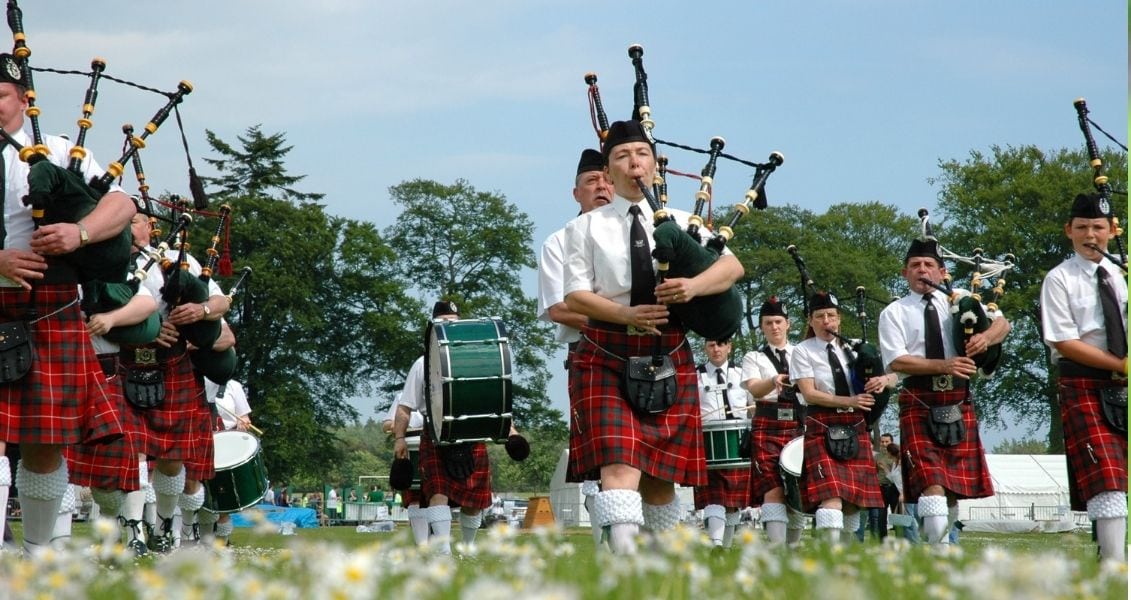International Bagpipe Day (International Bagpiper’s Day)
What day is it?
International bagpiper’s day is an annual holiday celebrated on March 10 in different parts of the world. It is difficult to find a person who has not seen, at least on the TV screen, how a man in a checkered skirt blows into the original pipe attached to the bag. The bagpipe is a unique musical instrument. It forms a plaintive melody that touches the deepest corners of the soul. There are people who are delighted with the sound of this instrument, and there are those who simply do not understand this kind of music.
However, regardless of love or loathing of the instrument, anyone can join in the celebration International bagpiper’s day. Considering the fact that the original instrument is gaining more and more popularity in the world, the holiday is celebrated in different countries of the globe.
How did the idea of celebrating International Bagpipe Day come about?
International bagpipe day celebrated since 2012. The idea of the celebration belongs to the chairman of the Society of bagpipe players – Andy Letcher. Members of the society undertake all the tasks of organizing and sponsoring this holiday. On this day, anyone, anywhere can go out and play their bagpipes. The goal of the International Bagpiper Day is to inform all the inhabitants of the planet about the unique national instrument. So, since 1986, the Society of bagpipe players has set itself the goal of attracting new musicians to play this instrument, so as not to lose the history of the bagpipe.
How did the bagpipe appear?
Although people are most familiar with the bagpipes, this musical instrument has different variations that are popular in many cultures around the world. The bagpipe is believed to have originated in Sumer about 5,000 years ago. The earliest written references to such an instrument appear from 400 BC. Thus, the ancient Greek poet Aristophanes mentions the bagpipe in his comedies.
It is believed that the bagpipe traveled westward through Europe along with the migrations of peoples and the development of individual cultures. The bagpipe was a well-known instrument in most of Europe until around the 9th century.
It is believed that the first instrument was made from a double pipe made of two reeds: both were made of reeds, but one played the melody and the other was responsible for the bass. Bags were made from whole skins of goats or sheep. More advanced tools had bags made from pieces cut from animal skins and sewn together. These types of simple tools are still found in the Arabian Peninsula and the Peloponnese, as well as in North Africa and Eastern Europe.
Shakespeare mentions the bagpipe in his play “The Merchant of Venice”. From about the thirteenth to the sixteenth century, there were many varieties of bagpipes in England, with versions for commoners and more elaborate examples for royal courts. Bagpipes lost their popularity at court in 1560.
Types of bagpipes
Bagpipes were widespread in France, Italy, and England. There are more than 200 varieties of this instrument in the world. Among the most famous and popular:
- A large Scottish bagpipe – consists of three bourdons: two tenors and one bass. The chanter has 8 holes and lets you play 9 notes. The device also has a special tube that pumps air. It has a rather loud and intrusive sound. It is a mandatory instrument in the arsenal of military bands of Scotland.
- Irish bagpipe Uilleannpipes are considered the most complex of all instruments of this family. Its feature is a chanter with a double reed, and the range of sounds includes as many as two octaves. A special frog is used to inject air into the bag. Drones (tubes) are inserted into a special collector. The instrument has a special Stop key mode that allows it to produce an extremely rich sound. This option allows you to turn drones on and off. Due to its complexity, multi-frequency and elegance of sound, the instrument can without a doubt be called a true work of musical art.
- Galician galta differs in a range of one and a half octaves. By squeezing the bag, you can move to the second octave. This instrument was extremely popular in the 16th century, then its popularity declined. However, in the 19th century, interest in Galician galta was renewed again. It has block-flute appliqué, which is very similar to the appliqués of some musical instruments of the Renaissance. Today, this tool is hardly used.
- Duda – Belarusian wind reed musical instrument. It is a small bag with small tubes. One of them is designed to fill the bag with air, the others make sounds. It has a strong and sharp sound.
Materials used in production
Large Scottish bagpipes dating back to the 1700s had bog oak drones. Later, with the development of Britain’s trade with Africa and the Americas, tropical hardwoods became available, and these were the woods chosen for the manufacture of pipes. African black and Brazilian rosewood are most suitable for this.
The choice of raw materials is often determined by the humidity of the region in which the tool will be used. Some tropical hardwoods used for drones, especially ebony, are ideal for the humid climate of the British Peninsula, but do not perform well in the drier areas of the United States. Some manufacturers use plastics, particularly acetyl polymers, to avoid climate complications.
The peculiarities of the climate should also be taken into account during the manufacture of bags. They must be airtight and water-absorbing. Sheepskin is used in the UK, but is not as durable in dry regions. In the United States, moose or cow hide is used, while Australian manufacturers use kangaroo hide.
Interesting facts about bagpipes
- Residents of Scotland call this instrument a “mountain bag with pipes”, in Ukraine – a goat, in Belarus – a bagpipe.
- Historians claim that the Roman emperor Nero loved playing the bagpipes.
- The national anthem of Scotland is called “The Flower of Scotland”, played by pipers on the Scottish bagpipes.
- Bagpipes are considered a military instrument. They are used in military bands, and during the war, bagpipe players played bagpipes to raise the morale of the troops. So, during the First World War, half a thousand bagpipe players died.
- Every morning at 9:30 a military band of bagpipe players dressed in national Scottish coats plays under the windows of Queen Elizabeth of England.
- The largest producer of bagpipes in the world is Pakistan. The fact is that the country was a colony of Great Britain for a long time. In those regions where Scottish soldiers were stationed, people learned to make the national instrument for them. Pakistan has long since left the colonial yoke, but local craftsmen have passed their skills from generation to generation. Therefore, the country will continue to be a producer of high-quality bagpipes.
When will we celebrate International bagpipe day?
| Year | Date | Weekday |
|---|---|---|
| 2021 | March 10 | Wednesday |
| 2022 | March 10 | Thursday |
| 2023 | March 10 | Friday |
| 2024 | March 10 | Sunday |
| 2025 | March 10 | Monday |





































